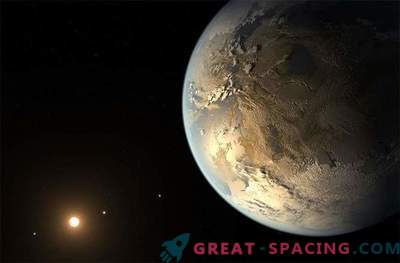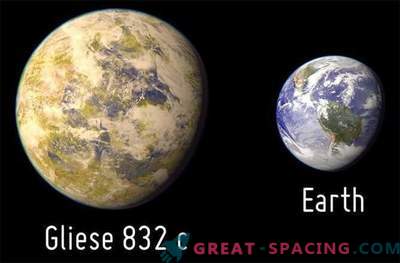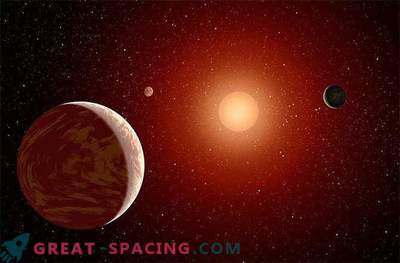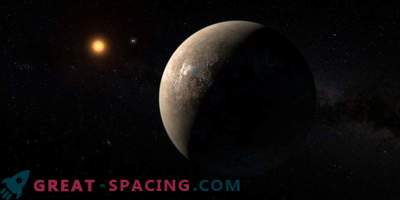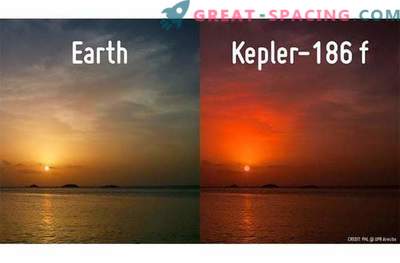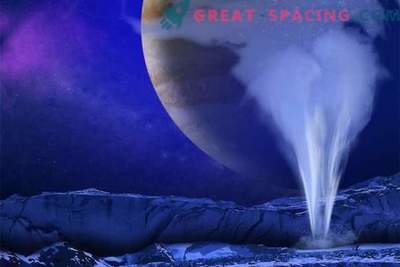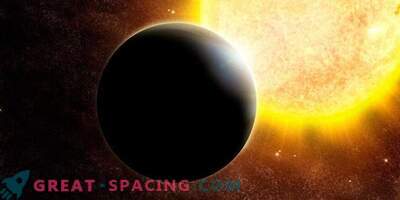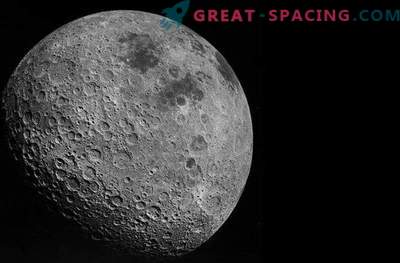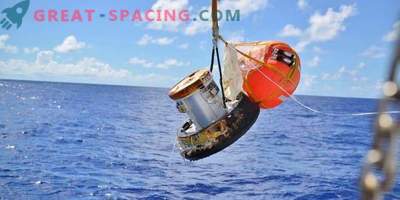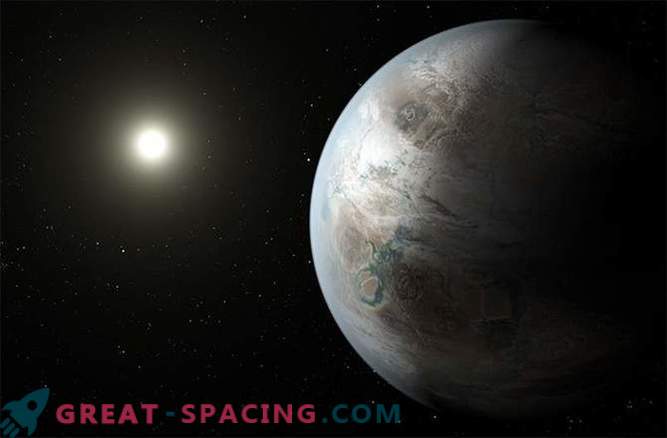
July 23 (Thursday) became a real treat for all astronomers observing exoplanets. On this day came the announcement of the discovery of the planet Kepler-452b - a strange world with pronounced earthly features. And the similarity is much higher than that of other exoplanets discovered earlier.
Located at a distance of 1,400 light years from our planet, Kepler-452b is very similar to Earth. However, the surface area of Kepler-452b is 60% larger than that of the Earth, and the weight of the exoplanet is five times that of Earth. This means that surface gravity on Kepler-452b is twice as large.

The G2 star serves as the Sun for Kepler-452b, a full rotation around it takes 385 days. Earlier discoveries of exoplanets were either too large, or too small, or had excessively wide orbits. None of them differed in size, similar to the earth, and was not in the habitable zone of the star, similar to the Sun.
In this photo you can see six small planets of the habitable zone. Each planet rotates around its star so that the correct distribution of solar energy is ensured. Water, presumably existing on the surface of the planets, remains in a liquid state. As you can see, each exoplanet has its own characteristics, but none of them is similar to the Earth in size and does not rotate around a star resembling the Sun.
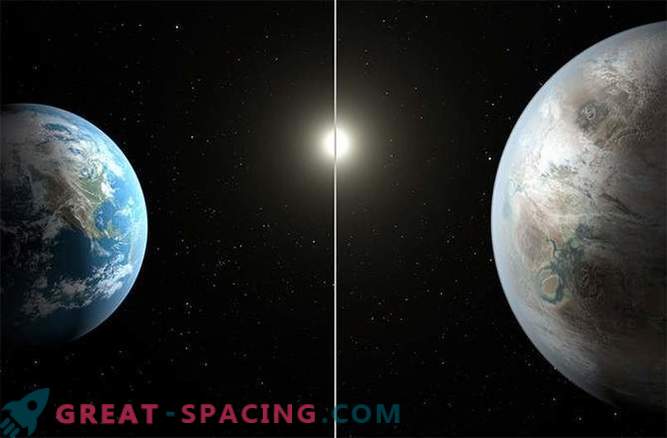
Kepler-452b is also quite intriguing for a careful study of an exoplanet.
One of the most interesting features of Kepler-452b is its age, which is 1.5 billion years older than the Earth. Therefore, the star system of exoplanets is older than our solar system.
According to the theory of star formation, planets form soon after the birth of their star. This means that Kepler-452b is a world older, and the habitable zone inside its star has been around for 6 billion years.
If there are elements necessary for biological life on the Kepler-452b surface, including liquid water and a favorable atmosphere, life can flourish in this world. Of course, the question about this is pure speculation, because we do not know for sure if there is water and atmosphere there. However, these thoughts look extremely tempting.
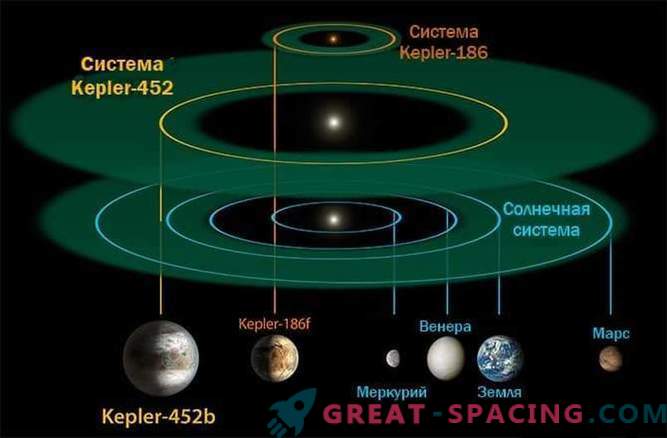
In this artistic image, you can see that the size of the inhabited zone of the Kepler-452 system is comparable to the size of the zone inside the Earth's orbit of rotation around the Sun. In addition, the compact system around the M-dwarf Kepler-186 is also included in this large-scale system. As can be seen, the habitable zone around Kepler-186 fits perfectly into the orbit of the movement of Mercury around the Sun. At the same time, red dwarfs are smaller and colder than stars of the G2 class, therefore their habitable zones are much smaller.
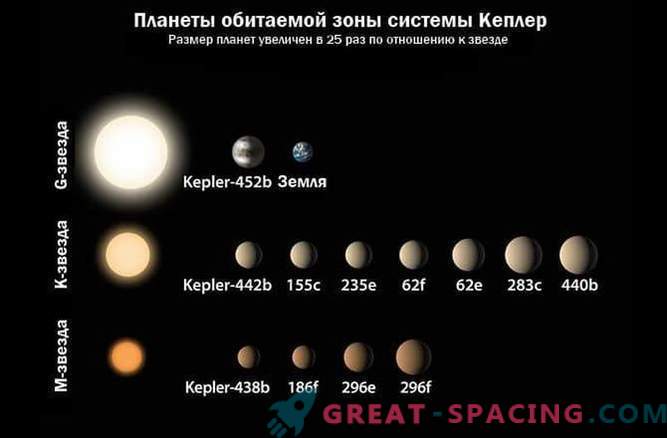
To date, about 1030 objects in the Kepler mission have been identified as exoplanets. However, only about 10 of them have an orbit inside the habitable zone. All of them have dimensions similar to that of the earth. And their orbits are located around three classes of stars: G (similar to the Sun), K-stars and M-dwarfs. G-stars are bigger and hotter than K-stars, and K-stars, in turn, are bigger and hotter than M-dwarfs. The colder the star, the smaller its habitable zone.
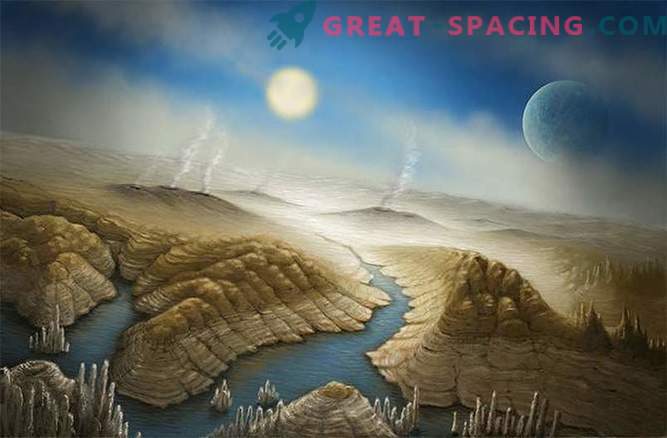
Now there is no reliable information about whether the Kepler-452b has a stony surface. Only, judging by the planetary models, can we assume its presence. If these assumptions are confirmed, then the alien world will become for us a fascinating place that will attract the attention of all earthly scientists. However, they still believe today that an exoplanet can have active volcanoes and a thick atmosphere.
But the biggest question is whether this world is adapted to biological life. Unfortunately, for now we just have to wait until the next generation of space telescopes notice the possible atmosphere of the rocky Kepler-452b. But final evidence can be obtained only by launching a guided probe to a distant exoplanet. Alas, but the journey to 1400 light years will take a very long time, so the news will have to wait a very long time.
